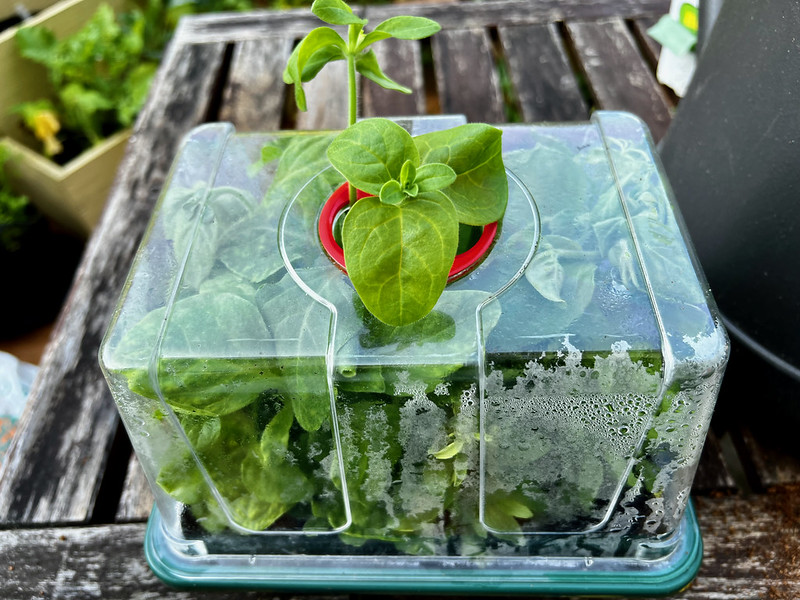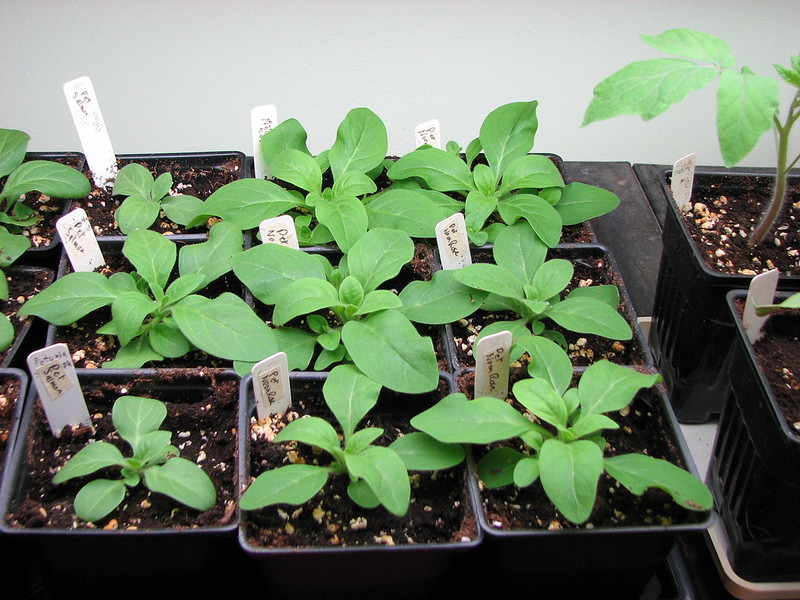Petunia propagation is primarily done by two methods: seeds and softwood cuttings. Both methods produce robust plants, although the seed starting takes longer to get plants that bloom reliably. Seed starting may seem intimidating, but with some basic equipment and access to a warm and sunny spot over the winter, even novice gardeners can be successful.

Photo by F Delventhal, unmodified, Flickr, Copyright CC BY 2.0
Methods To Propagate Petunias
Petunias are part of the Solanaceae family, which includes other heat and sun lovers such as tomatoes and peppers. In fact, starting Petunias from seed is no more difficult than starting tomato seeds. Taking cuttings during the growing season is another great way to increase your plant stock. The softwood cuttings easily root in soil and will even root in water on your kitchen window sill.
What You Need To Propagate Petunias
The equipment needed for propagating Petunias is fairly simple and is often found around the shed or garage. Seed starting will require supplemental lighting and heat from a heat mat or the top of a refrigerator or other warm spot in the house that stays above 65 degrees Fahrenheit. Use a sterile seed starting mix that is peat-free and finely sieved. The seed of Petunias is very tiny and can be handled more easily when it is mixed with a small amount of sand. The sand is easier to sow evenly and will be more visible on the surface of the potting mix.
To take cuttings from Petunias, use a sharp pair of hand pruners or a utility knife to cut the stem. Use a potting mix that has a high ratio of perlite to root the cuttings in. Small 4-6 inch diameter pots can hold several cuttings. Cuttings can also be rooted in a glass of water if desired and potted on once roots appear.
Best Time To Propagate Petunias
Cuttings can be taken at any point during the growing season. If you have an indoor space with heat and light or a heated greenhouse, Petunia cuttings can be started over the winter and planted outside the following season. Make sure to take cuttings from a healthy plant, long before the foliage begins to die back for the season. Generally August is a good time to take cuttings to overwinter.
Petunia seeds must be started well in advance of growing outdoors in the spring. Start the seeds indoors 8-12 weeks ahead of the average last frost date for your location. Mid-February sowing will produce plants ready to plant out by Mother’s Day if the outdoor temperature is above 50 degrees F.

Photo by Amy Woodward
Steps To Propagate Petunias
Growing Petunias from seed is by far the most economical method of sourcing Petunia plants. For the cost of a packet of seeds, you can grow many plants in containers, hanging baskets, or in a garden bed.
Step 1 - Fill a seed starting tray with a sterile seed starting potting mix rehydrated with water and firm it down gently.
Step 2 - Mix the seeds with a small amount of coarse sand and sprinkle the seeds evenly across the potting mix. Do not cover the seeds with soil. Petunias require heat and light to germinate.
Step 3 - Put a greenhouse cover or piece of clear plastic over the top of the growing flat. This helps the soil retain moisture so the seeds can germinate quickly.
Step 4 - Place the tray on a heat mat that maintains a temperature of 65-75 degrees F 24 hours a day. Provide 16 hours of light from a grow light.
Step 5 - If you do not have a heat mat or grow light, place the flat in a window with direct sun in a well-heated room.
Caring For Young Petunias
Once the seeds germinate and the first sets of leaves appear, the plastic or greenhouse cover should be removed. This prevents any excess condensation from encouraging damping-off fungus from forming and killing the seedlings. Pot the seedlings into their own pots once the first true leaves appear. Keep the pots constantly moist, and feed with a highly diluted fish emulsion or liquid seaweed after 6 weeks of growth. Keep the seedlings in a very bright location, rotating them daily if necessary to keep the stems strong and stout.
One week before planting outdoors, begin the process of hardening off the plants. Place the pots in a semi-shaded and sheltered location for 5-7 days before moving the plant into full sun. Hardening off ensures that your plants will remain healthy when transplanted and put on growth quickly.
 |
Author Robbin Small - Published 8-14-2023 |
